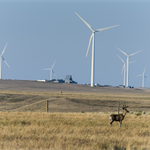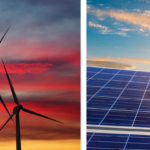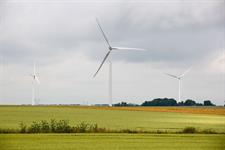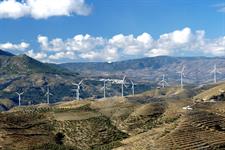Carbon emissions stall as wind and solar continue global growth – report
Energy Disrupter

Ember’s ‘Global Electricity Mid-Year Insights 2023’ report found that global wind and solar energy generation increased by 12% over the first six months of 2023, while global power sector emissions grew by just 0.2% during the same period
The plateauing in fossil fuel emissions contrasted sharply with the rise in wind and solar energy over H1 this year, which were “the only two electricity sources that significantly increased their share in the global power mix” according to Ember.
Growth and generation
The report found that wind and solar together generated 14.3% of global electricity in the first half of 2023 – an increase of 1.5% compared with the same period last year.
However, the increase in both sources of clean power slowed in the first half of 2023 compared to a year ago.
Wind generation increased by 10% – down 6% year-on-year – with an additional 109TWh produced in H1 this year compared with 147TWh last year, the report said.
Meanwhile, increases in solar capacity grew by 16% in the first half of 2023, down from 26% last year.
China leads the world
China — by far the world’s largest energy consumer — continued to lead in wind and solar generation.
The country dominated the rise in wind energy generation in the first half of 2023 and accounted for 91% of the global growth in use of the technology, according to Ember.
The rest of the world lagged behind China, the report authors said.
“The EU, US and Japan are lagging behind China’s progress on wind generation. China achieved a 26% growth in wind generation in the first half of 2023 compared to the same period last year. In comparison, wind generation only grew 4.8% in the EU, while Japan recorded only a 2.4% increase from an already low baseline. The US saw wind generation fall 5.6% due to poor wind conditions,” the report stated.
Cause for concern
Ember warned that wind capacity additions were trending downwards.
According to its report, new wind additions peaked in 2020 when 111GW were added, and fell to 92GW in 2021, before dropping again to 73GW in 2022.
Wind-power generation saw its largest increase in 2021 with the addition of 268TWh, but this slowed to additions of 251TWh in 2022 and just 109TWh in the first half of this year.
The report cited long-standing structural issues which were impacting the rollout of new wind energy projects, including permitting and grid connection delays.
Fossil fuels still dominate
Fossil fuels as a whole remained the dominant source of electricity generation worldwide in the first half of 2023 and they accounted for nearly 60% of the mix.
But they grew by just 1%, in contrast to the rise in renewables generation.
Ember’s report suggested that if there had not been a slump in hydroelectricity generation – which it attributed to global droughts that are “likely exacerbated by climate change” – fossil fuel generation would have actually fallen during the first six months of 2023.
But growth in emissions stall
Instead, fossil fuel emissions rose by 0.2% year on year, which equates to an extra 12 million tonnes of CO2. The report said the comparatively slight increase was driven by major falls in emissions in the global north.
Emissions from electricity generation were down by 17% in Europe, 12% in Japan and by 8.6% in the US.
These falls were in part driven by a steep drop in the use of coal generation, which were down by 27% in the US, 23% in the EU and by 7.3% in Japan.
Fossil fuel sources including gas and oil nevertheless generated 59.9% of global electricity over the period.
















